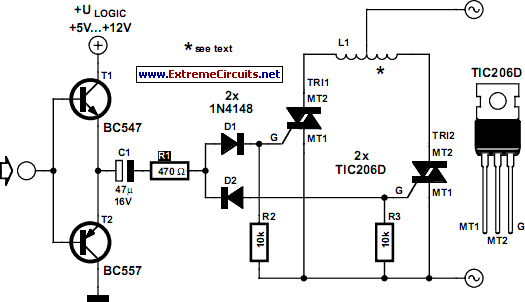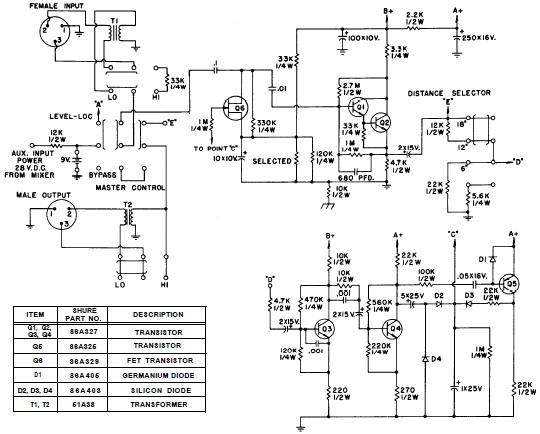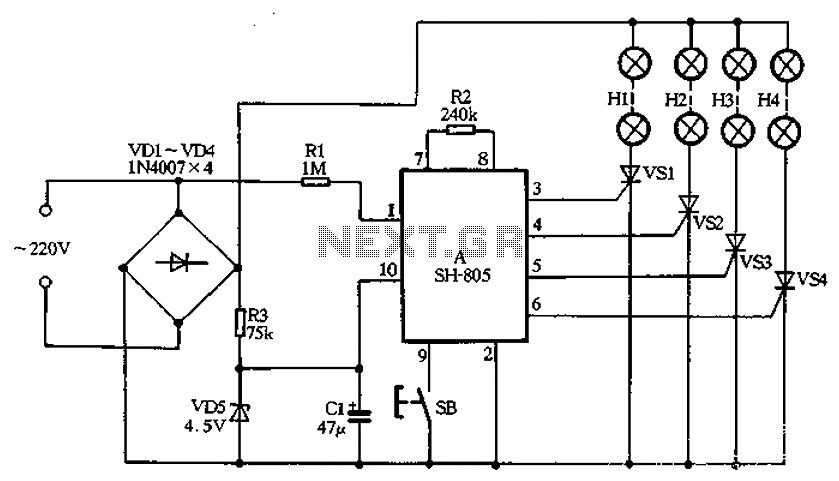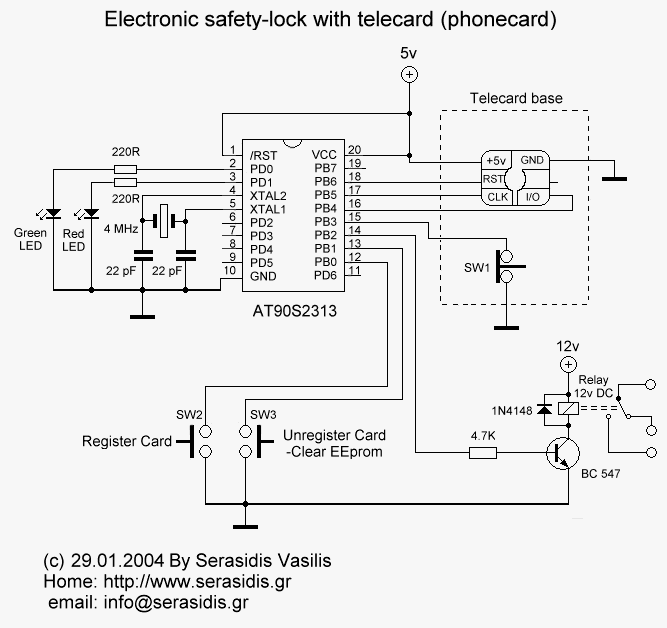
Knightrider lights for model cars
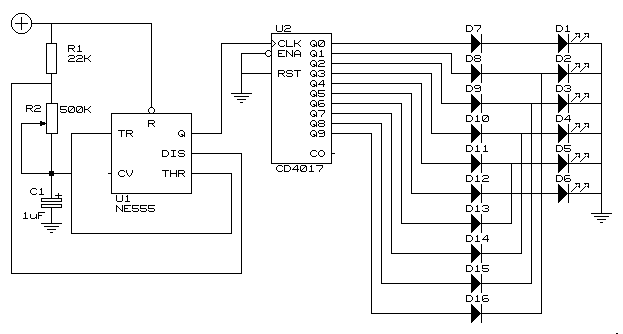
This simple circuit drives 6 LEDs in Knightrider scanner mode. Power consumption depends mainly on the type of LEDs used if you use a 7555 (555 CMOS version). More: Note that VDD and GND for the ICs are not shown in the circuit drawing.
The described circuit utilizes a 7555 timer IC configured in astable mode to create a sequential LED lighting effect reminiscent of the "KITT" scanner from the television series Knight Rider. This effect is achieved by driving six LEDs, which are connected in series or parallel configurations depending on the desired visual effect and power requirements.
In the astable configuration, the 7555 timer generates a continuous square wave output, which can be adjusted for frequency by varying the resistor and capacitor values connected to the timing pins. The output from the timer drives a series of transistors or MOSFETs, which act as switches for the LEDs, allowing them to turn on and off in succession.
The circuit design should include appropriate current-limiting resistors for each LED to prevent excess current from damaging them. The power consumption of the circuit is influenced by the forward voltage and current specifications of the LEDs used, as well as the supply voltage provided to the 7555 IC.
It is essential to ensure that the VDD (positive supply voltage) and GND (ground) connections for the 7555 IC are correctly established to ensure proper functionality. These connections are typically made to a DC power source, which can vary depending on the specifications of the LEDs and the requirements of the circuit.
The overall layout of the circuit should be carefully planned to minimize interference and ensure a reliable operation of the LED scanning effect. Proper grounding and decoupling capacitors may also be added to enhance stability and performance, especially if the circuit is implemented in a noisy electrical environment.This simple circuit drives 6 LEDs in `Knightrider scanner mode`. Power consumption depends mainly on the type of LEDs used if you use a 7555 (555 CMOS version). Note that VDD and GND for the ICs are not shown in the circuit drawing. 🔗 External reference
The described circuit utilizes a 7555 timer IC configured in astable mode to create a sequential LED lighting effect reminiscent of the "KITT" scanner from the television series Knight Rider. This effect is achieved by driving six LEDs, which are connected in series or parallel configurations depending on the desired visual effect and power requirements.
In the astable configuration, the 7555 timer generates a continuous square wave output, which can be adjusted for frequency by varying the resistor and capacitor values connected to the timing pins. The output from the timer drives a series of transistors or MOSFETs, which act as switches for the LEDs, allowing them to turn on and off in succession.
The circuit design should include appropriate current-limiting resistors for each LED to prevent excess current from damaging them. The power consumption of the circuit is influenced by the forward voltage and current specifications of the LEDs used, as well as the supply voltage provided to the 7555 IC.
It is essential to ensure that the VDD (positive supply voltage) and GND (ground) connections for the 7555 IC are correctly established to ensure proper functionality. These connections are typically made to a DC power source, which can vary depending on the specifications of the LEDs and the requirements of the circuit.
The overall layout of the circuit should be carefully planned to minimize interference and ensure a reliable operation of the LED scanning effect. Proper grounding and decoupling capacitors may also be added to enhance stability and performance, especially if the circuit is implemented in a noisy electrical environment.This simple circuit drives 6 LEDs in `Knightrider scanner mode`. Power consumption depends mainly on the type of LEDs used if you use a 7555 (555 CMOS version). Note that VDD and GND for the ICs are not shown in the circuit drawing. 🔗 External reference
